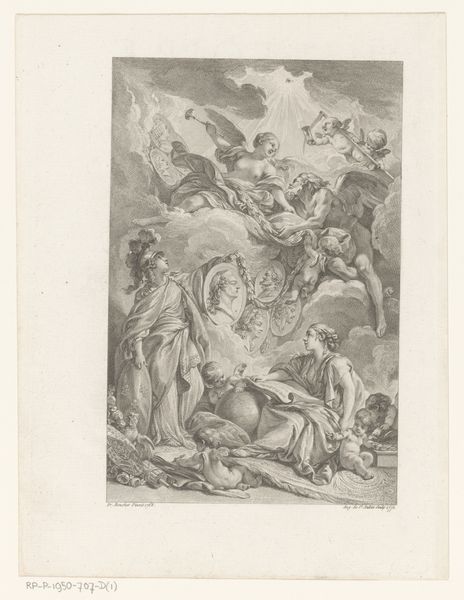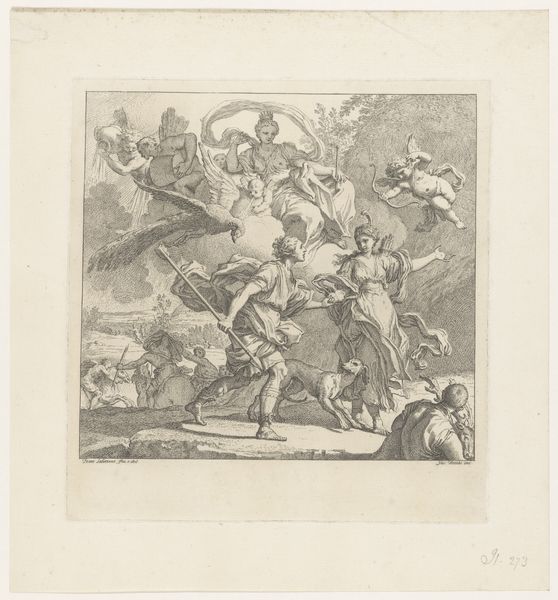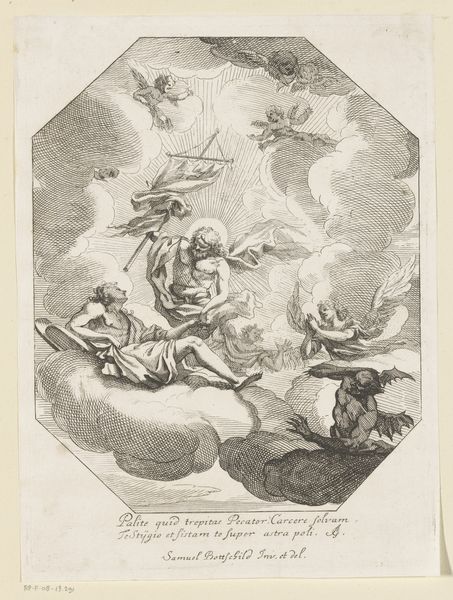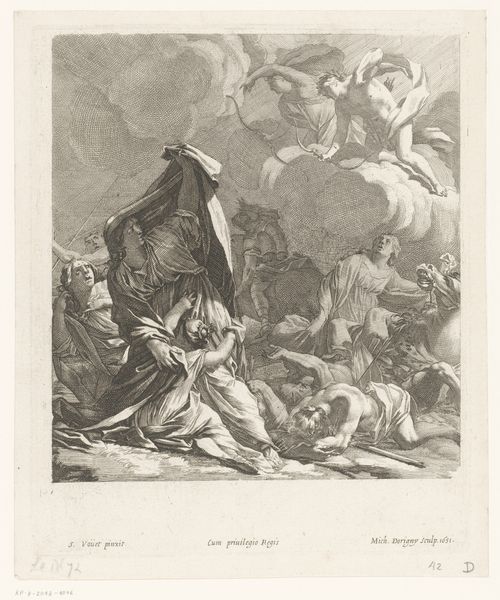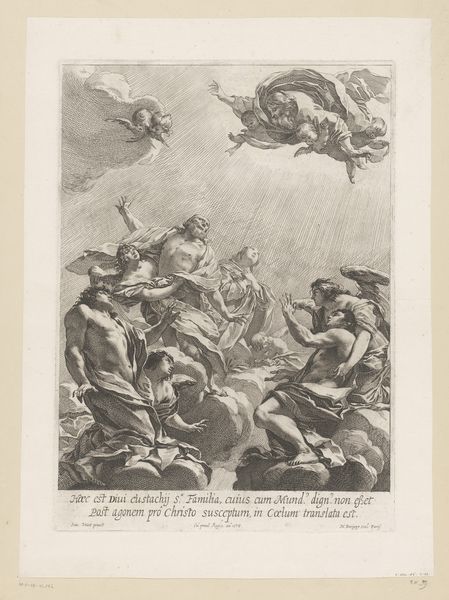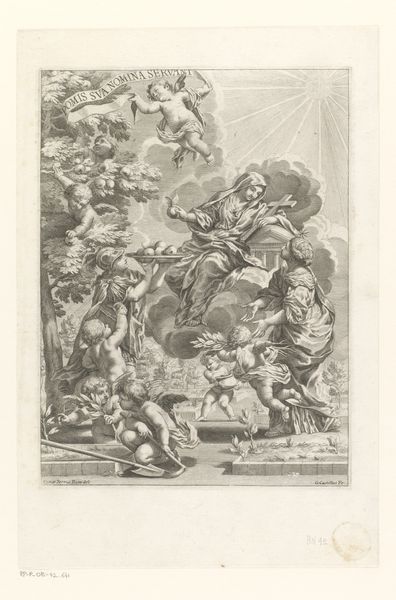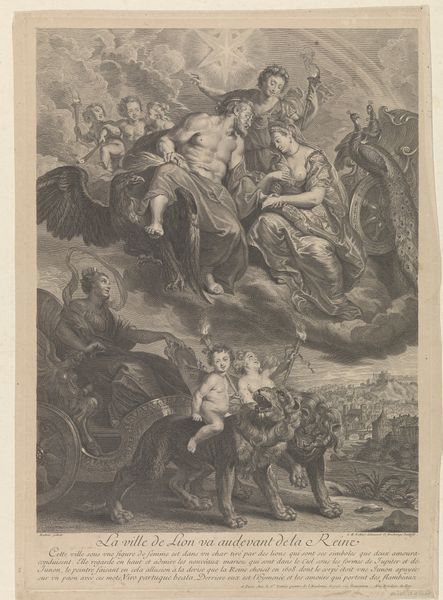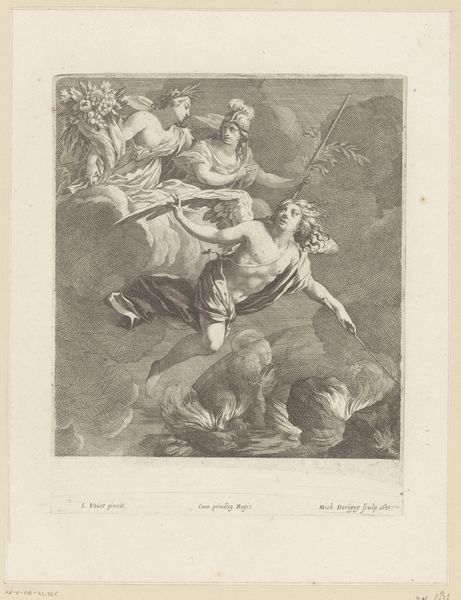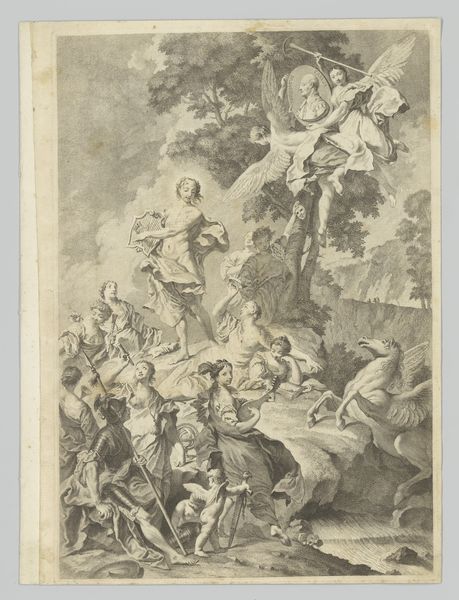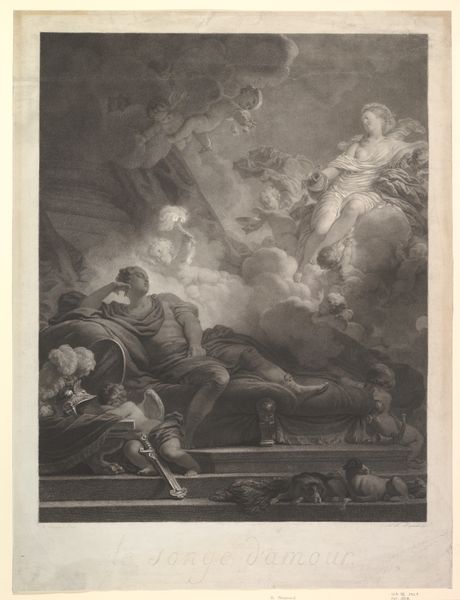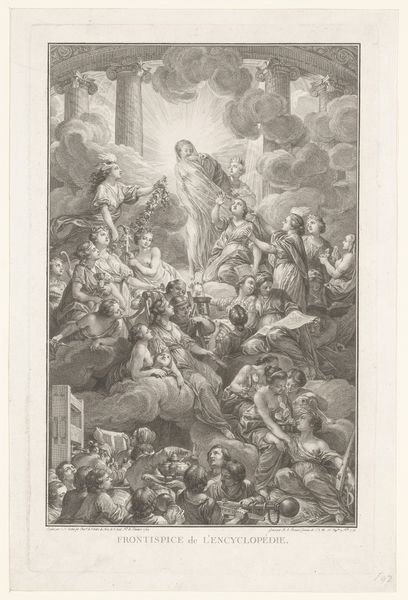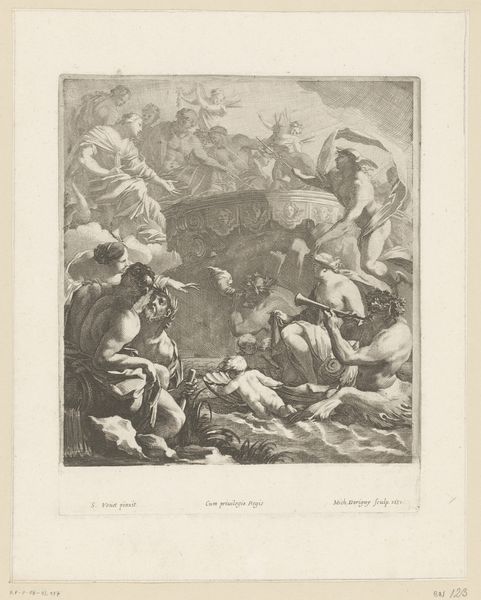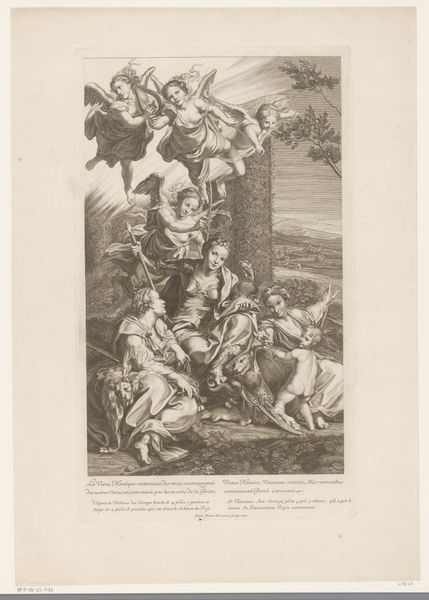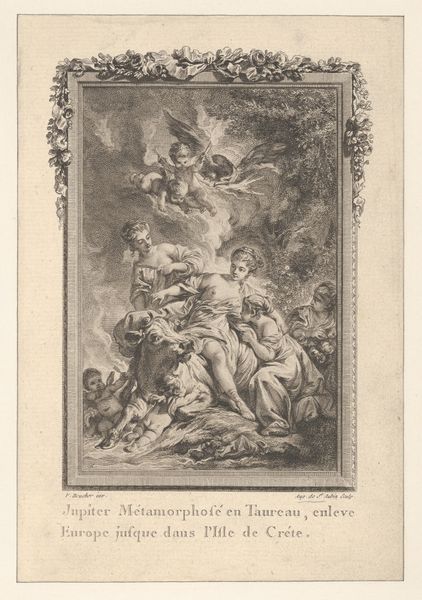
engraving
#
allegory
#
baroque
#
figuration
#
line
#
history-painting
#
engraving
Dimensions: height 245 mm, width 202 mm
Copyright: Rijks Museum: Open Domain
Curator: Before us is Michel Dorigny's "Psyche on Olympus," an engraving from 1651. It depicts the culmination of the story of Psyche from Apuleius’ The Golden Ass. Editor: What strikes me immediately is the contrast. The airy, almost whimsical clouds at the top sharply juxtapose the turmoil and drama depicted below. It's like looking at two different worlds, separated by a single, powerfully etched line. Curator: The work is an allegory, emblematic of the themes of love and redemption so popular during the Baroque period. Dorigny was associated with the French court, and prints like these disseminated classical stories but also affirmed the moral and social order through mythological narrative. Editor: The composition guides the eye upward—from the shadowed, struggling figures in the lower portion, who appear almost grounded in earthly concerns, towards the celestial gathering above. There's such a beautiful sense of ascending grace, wouldn't you say? Note the figure on the lower left in dynamic pose with a swirling drap, it’s pure energy! Curator: Exactly, and the iconography serves its purpose too. The muscular, suffering figures possibly representing the trials that Psyche has had to go through as an emblem of moral test and even earthly struggle. Editor: Yet, even in its relatively small scale, Dorigny conveys so much through the variation in line quality, you see that even in this engraving version? The thin, delicate lines used for the gods above contribute to their ethereal appearance, unlike the darker, denser strokes depicting those below, emphasizing the weight of their earthly constraints. Curator: What's so interesting, for me, is to observe how printmaking during this era enabled stories to be retold and reshaped according to the values of the time, creating an ever-evolving visual narrative. Prints played an essential role in image production, circulation and political propaganda. Editor: It is a dance of line and shadow, isn’t it? I hadn't really considered it from that angle, thinking about the power and purpose these images held beyond simple decoration. Curator: The interplay of allegory, and formal composition creates a moralizing print. It highlights the power of these classical myths as tools of shaping our understanding about life, and ourselves! Editor: Indeed, seeing how these classical stories are filtered through artistic interpretation offers us not only a window into the art of that time, but also into its soul.
Comments
No comments
Be the first to comment and join the conversation on the ultimate creative platform.
